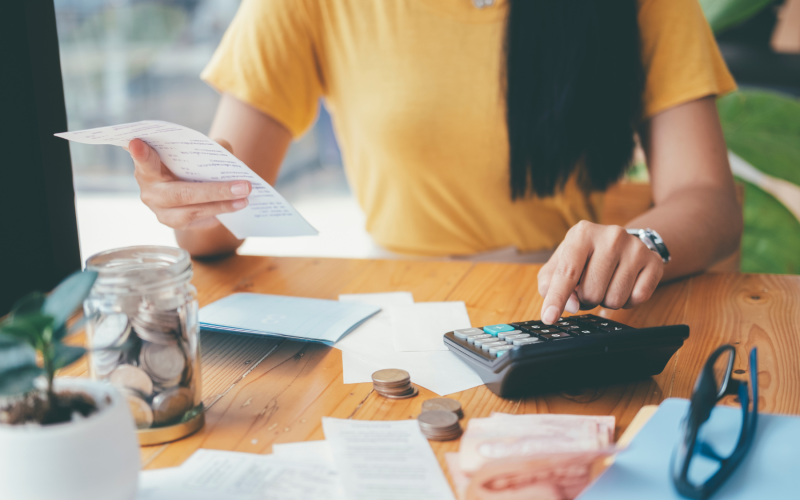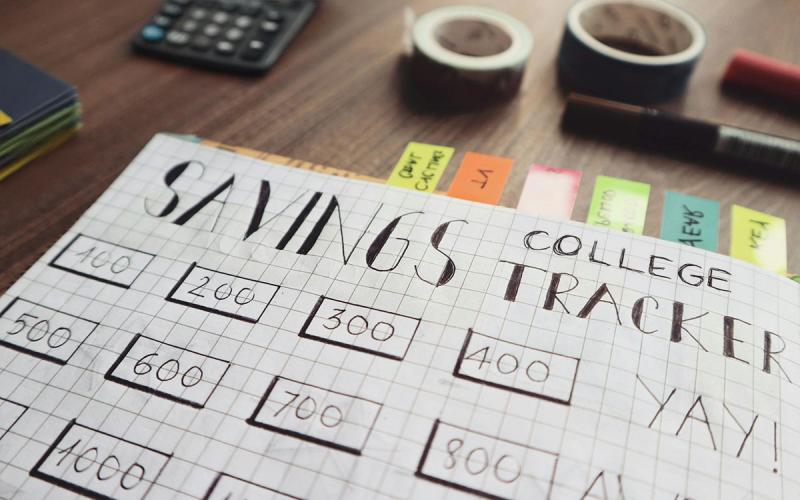Written by Carrie Johnson (former SDSU Extension Family Resource Management Specialist).
Many people face a financial crisis at some point in their life that can make it difficult to pay bills. You may receive notices from creditors, your accounts could be turned over to debt collectors, or even worse, you could lose your home or car. Whatever the crisis is, it can seem overwhelming. But often, it can be overcome. It depends on how much debt you have, how dedicated you are in paying off your debt, how much debt you can handle, and your prospects for the future.
Types of Debt
Debts fall into two primary categories; secured and unsecured. Before you can prioritize your debt you need to understand the difference, because the consequences of not paying a secured debt differ tremendously from those of not paying an unsecured debt.
- Secured Debts are those that are secured by some form of property or asset called collateral. An example would be a car loan where the car is collateral and if you stop making payments, the creditor will take back, or repossess the car.
- Unsecured Debts are those that are not secured by any property. Credit card debt and medical bills are examples.
Prioritizing Debt
If you are having issues paying all of your bills every month, it may be a necessity to prioritize your debt.
- High priority debts are those that you could face serious, even life-threatening, consequences as a result of not making your payment. Some examples would be rent/mortgage, utility bills, child support, car payments, other secured loans, and unpaid taxes.
- Medium priority debts are debts that if not paid it won’t cause dire consequences in your personal life, but could be painful nonetheless. Examples of medium priority debts would be car insurance, medical insurance, car payments for a car not essential for your job, items your children need, court judgments, and federal student loans.
- Low priority debts are debts that when not paid there is no immediate or devastating effects. Credit cards, department store or gasoline charges, loans from friends and relatives, newspaper and magazine subscriptions, legal/medical/and accounting bills, and other unsecured loans are examples of low priority debts.
Signs of Too Much Debt
Here is a list of signs that you may have too much debt and may be in financial trouble.
- You do not have any savings.
- You only make the minimum payments on your credit cards each month.
- You continue to purchase on your credit cards while trying to pay them off.
- You are occasionally late in making payments on bills, credit cards, or other expenses.
- You aren’t sure how much debt you actually have.
- You use cash advances from your credit cards to pay other bills.
- You bounce checks or overdraw your bank accounts.
- You’ve been denied credit.
- Your debt is a source of stress in your life.
Steps to Control Debt
- Stop digging deeper.
The first step to control debt is to stop digging yourself even deeper in debt. Stop using your credit cards that you currently have a balance on. Stop shopping with credit cards in your possession. Keep your credit card use under control. If you shop with only cash you will not be as tempted to buy something you can’t afford. Stop taking out new loans. By taking out new loans, you are only making matters worse. - Develop a budget.
To help take control and to manage your money wisely, you need to balance your expenses to your income. That means you do not have more expenses than income. You need to assess and track how much income you have and how much money you spend each month. After you keep track of expenses for a few months, and create a budget or spending plan, you may notice that there are some spending leaks. You will need to cut back on spending to take control of your current debt. - Concentrate on paying down debt.
By paying down current debt, you will relieve some financial hardship on yourself. Set a goal for payment date, amount you will pay and where the money is coming from, make it a habit and stick to your plan until a revision is needed or all debts are paid in full. You will want to pay off loans and credit cards with high interest rates and power pay your debt.- Powerpay is a no cost computer program that will analyze options for debt repayment.
- PowerPay will give you the tools to develop a personalized, self-directed debt elimination plan. Discover how quickly you can become debt free, and how much you can save in interest costs by following your debt reduction plan.
Make a commitment to pay off your debt. This means that you don’t add any more debt—no more charges on your credit cards and no more loans. Use any extra money to pay down other bills.
Financial Counseling
Learn to become better money managers through counseling and education services. Financial counseling provides the opportunity to address individual financial issues or concerns in a private confidential setting.They will review your current financial position including income, expenses, debt and current goals.
- Consumer Credit Counseling Services provides free and low cost services including individual budget counseling, debt management, and community education. These services are specifically designed to help clients take control of their financial future.
- Consumer Credit Counseling Service of the Black Hills was established as a non-profit agency to help people in western South Dakota overcome their financial obstacles, achieve their financial goals, and improve the quality of their lives.
Financial Coaching
Financial coaching is an emerging approach to help individuals improve their financial situation. Financial coaching provides one-on-one sessions with clients in order to ‘coach’ performance improvements to meet goals mutually set by the coach and client. Coaching is differentiated from counseling in that coaches are not “experts,” but instead they provide encouragement and monitoring over advice, and do so in a process largely driven by the client.
Resources
- Coping With Debt: Learn some self-help ways to deal with your financial situation.
- Choosing a Credit Counselor: Explains how a reputable credit counseling organizations can advise you on managing your money and debts, help you develop a budget, and offer free educational materials and workshops.
- Debt Collection FAQs: A Guide for Consumers: If you’re behind in paying bills, or a creditor’s records mistakenly make it appear that you are, a debt collector may be contacting you. Learn the facts on how to work with them.
- For People on Debt Management Plans: A Must-Do List: Know how to handle issues if on a debt management plan. There are some things that could be of special concern if you have a debt management plan with certain companies.
- Filing for Bankruptcy, What You Need to Know: If having trouble paying your bills, consider these possibilities before considering filing for bankruptcy.
Useful Websites
- PowerPay: Power Pay is a no cost computer program that will help manage your debt. It will give you the tools to develop a personalized, self-directed debt elimination plan.
- Deciding Which Bills to Pay First: When your bills exceed the money available to pay them, you will have to develop a revised payment plan in order to repay your debts.
- Dealing with Debt: Learn what debt is and when is becomes bad debt, how to get out of debt, and who else can help, debt relief services, and debt consolidation.
- Debt Management Basics: Don’t let bills keep you up at night. Make a change by facing your debt head on.
- Practical Money Skills: Lean how to tell if debt has become a problem for you, how to calculate your debt and tips on how to get out of debt.


